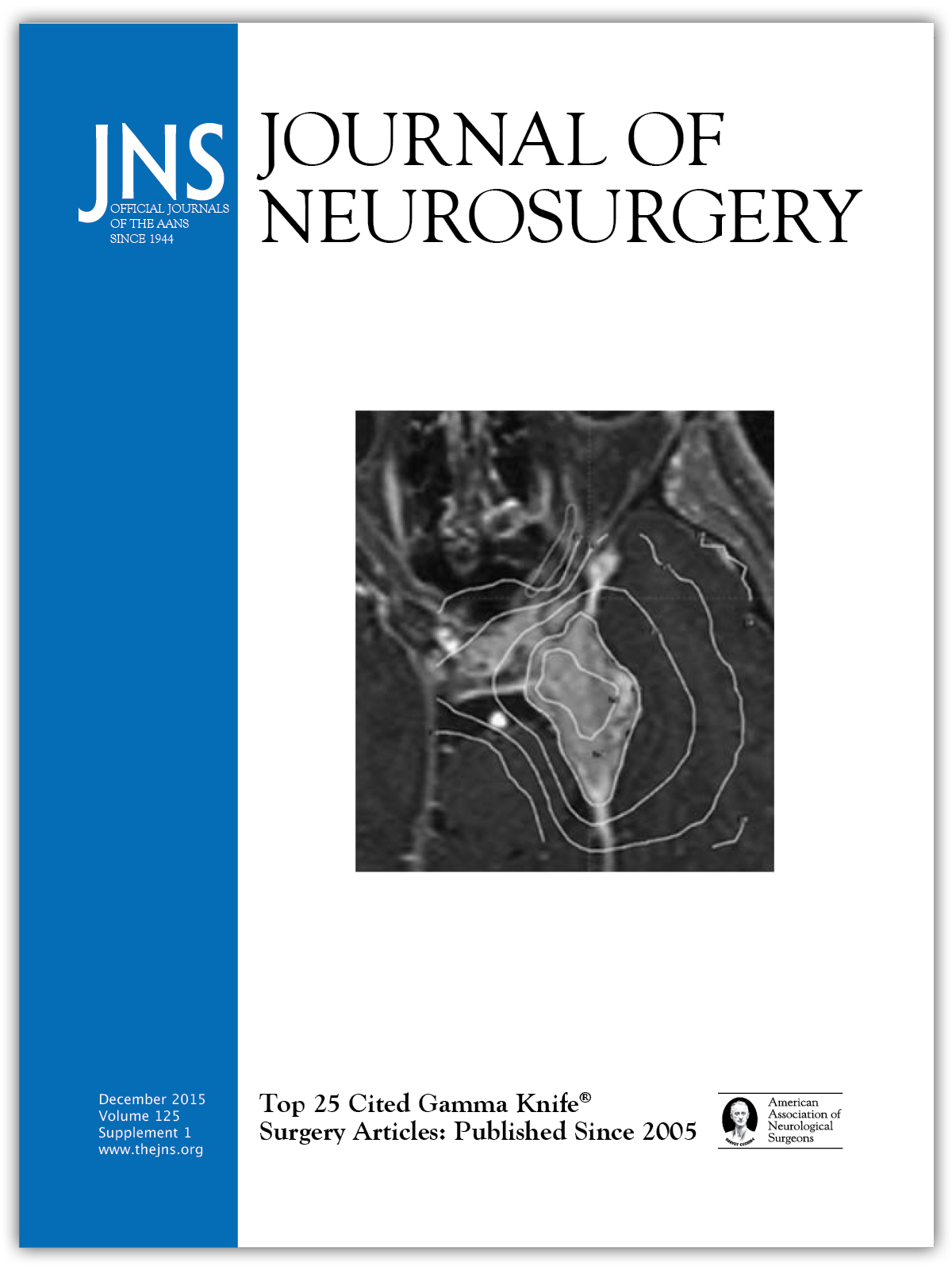Object
Meningioma is the most frequent benign tumor treated with Gamma Knife surgery (GKS); however, the assessment of its efficacy and safety in slow-growing tumors is an ongoing process, requiring analysis of long-term results.
开云体育世界杯赔率
Three hundred sixty-eight patients harboring 400 meningiomas treated between 1992 and 1999 at Na Homolce Hospital were evaluated. The median patient age was 57 years (range 18–84 years). The median tumor volume was 4.4 cm3(range 0.11–44.9 cm3). The median tumor margin dose to the 50% isodose line was 12.55 Gy (range 6.5–24 Gy). Descriptive analysis was performed in 331 patients (90%); 325 patients had a follow-up longer than 24 months (median 60 months), and six patients were included because of posttreatment complications. The volume of treated tumors decreased in 248 cases (69.7%), remained the same in 99 (27.8%), and increased in nine (2.5%). The actuarial tumor control rate was 97.9% at 5 years post-GKS. Perilesional edema after radiosurgery was confirmed on neuroim-aging in 51 patients (15.4%). The temporary and permanent morbidity rates after radiosurgery were 10.2 and 5.7%, respectively.
Results
A significantly higher incidence of tumor volume increase was observed in men compared with women and in tumors treated with a margin dose lower than 12 Gy. Significant risk factors for edema included an age greater than 60 years, no previous surgery, perilesional edema before radiosurgery, a tumor volume greater than 10 cm3, a tumor location in the anterior fossa, and a margin dose greater than 16 Gy.
Conclusions
Stereotactic radiosurgery is a safe method of treatment for meningiomas. A minimum margin dose of 12 to 16 Gy seems to represent the therapeutic window for benign meningiomas with a high tumor control rate in a mid-term follow-up period.



